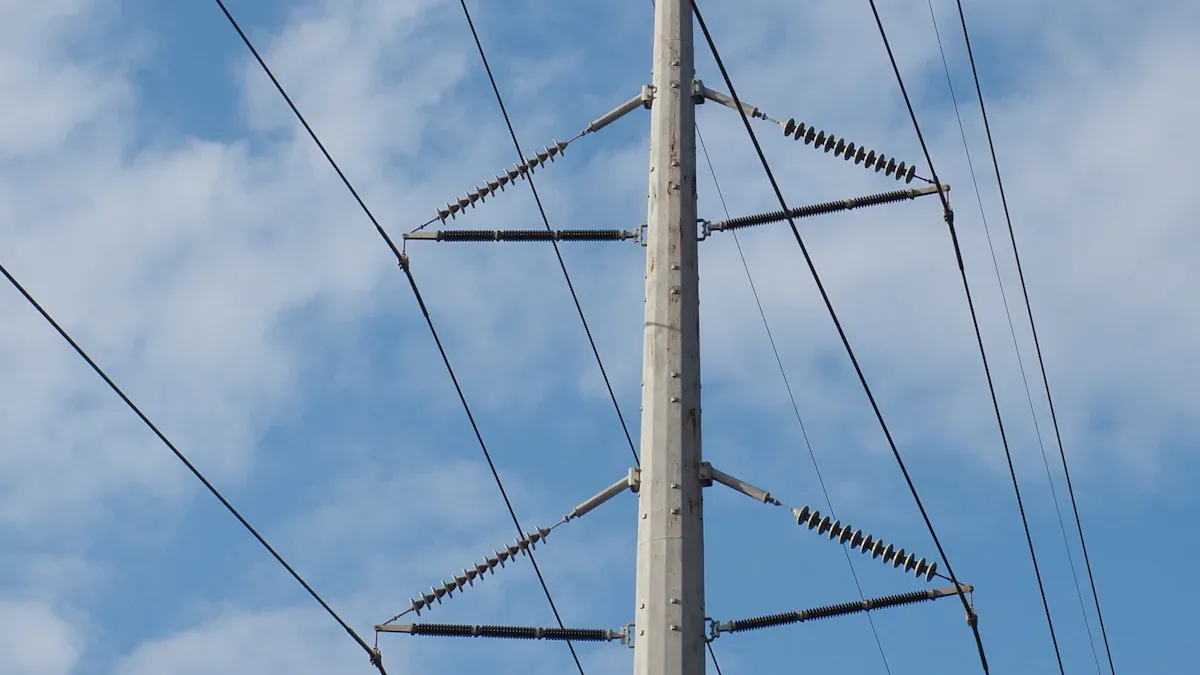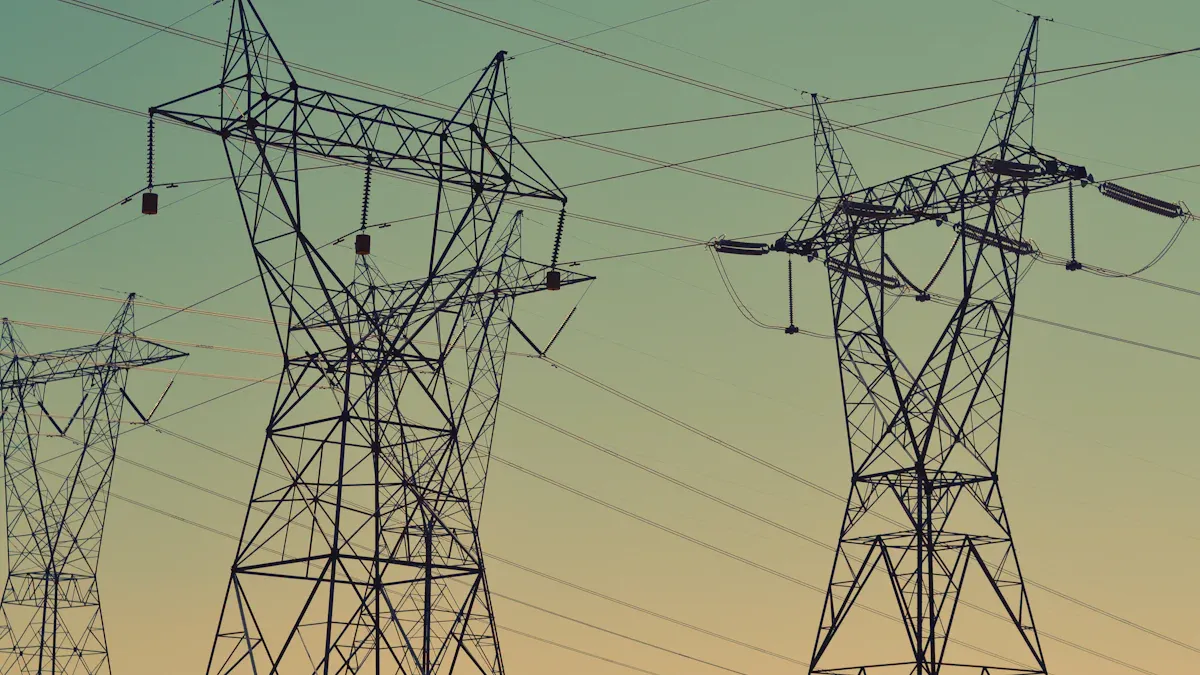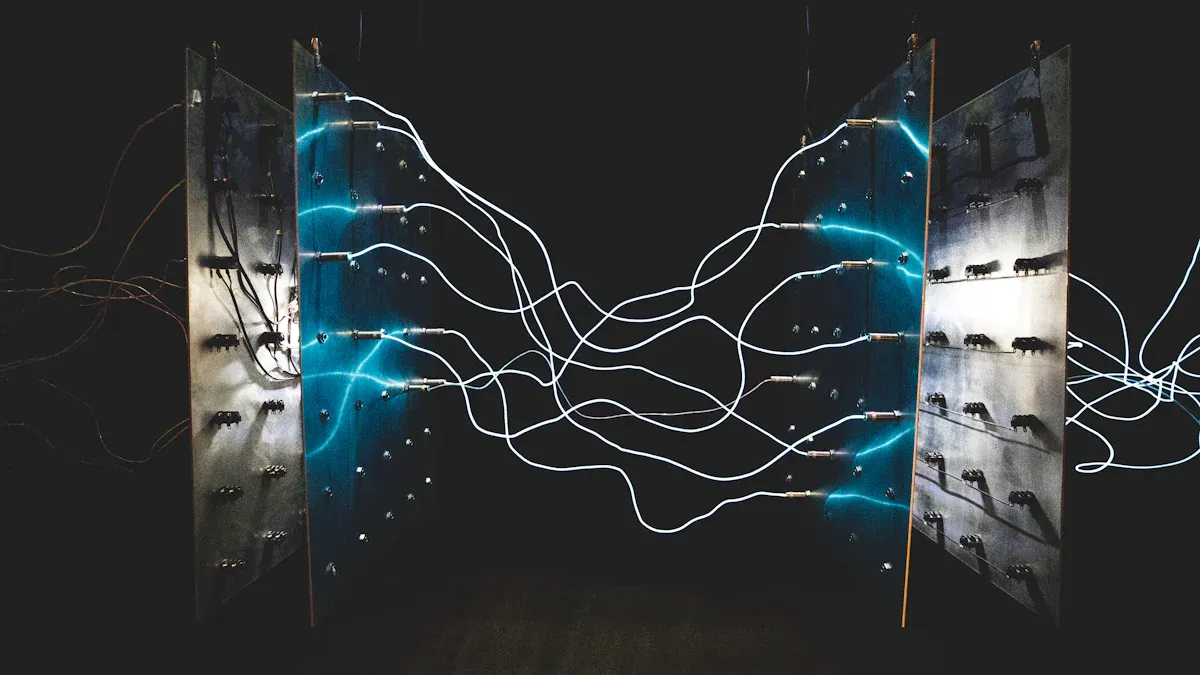
Efficient power management is critical for modern data centers and IT facilities. Basic PDUs often lack the advanced features needed to monitor and control energy usage effectively. Upgrading to smart systems can address this gap. For instance:
- Metered PDUs can boost energy efficiency by 20% when paired with server consolidation and airflow optimization.
- Intelligent rack PDUs reduce energy waste by up to 20% through precise monitoring.
- ATS PDUs enhance reliability by 25% in facilities with backup power systems.
PDU Retrofit Kits offer a cost-effective solution for this transformation. They eliminate the need for complete replacements, saving time and resources. By following a simple four-step process, facilities can seamlessly upgrade their power distribution systems.
Key Takeaways
- Check your current PDU setup to find problems or missing features. This helps you know what upgrades are needed for better energy use.
- Pick the right PDU Retrofit Kit that works with your system. Look for features like remote control and the ability to grow with future needs.
- Follow the correct steps to install, like getting tools and following the maker’s instructions. This makes the upgrade easy and lowers risks.
- Add monitoring tools after installing to watch energy use live. This helps you make quick changes and keeps things running smoothly.
- Study energy data often to spot waste and improve power use. Smart changes can save a lot of energy over time.
Step 1: Assess Current PDU Setup
Evaluate Existing PDU Capabilities
Identify limitations of basic PDUs.
Basic PDUs often lack the advanced features necessary for modern data centers. They provide limited power quality data, which can negatively impact performance and safety. Many facilities still rely on outdated systems that cannot monitor power quality at the rack level. This absence of detailed information makes it challenging to address power issues effectively. In most cases, additional monitoring devices and manual intervention are required to resolve problems.
Smart PDUs, on the other hand, offer precise monitoring and control of energy consumption. They provide data center managers with valuable insights to optimize power infrastructure and reduce costs. Enhanced circuit breaker trip forensics in these systems can pinpoint specific outlets causing issues, enabling quicker resolutions. Intelligent PDUs also integrate seamlessly with DCIM solutions, delivering real-time power usage metrics. These capabilities are essential for minimizing energy consumption and maximizing uptime.
Determine the need for smart features like monitoring and control.
The need for smart features becomes evident when considering the limitations of basic PDUs. Facilities aiming to improve energy efficiency and operational reliability should prioritize upgrades. Features like remote monitoring, energy tracking, and automated alerts can transform power management. These tools not only enhance visibility but also help identify inefficiencies and prevent downtime. For facilities looking to modernize, PDU Retrofit Kits provide a cost-effective way to integrate these smart features without replacing existing systems.
Check Compatibility with PDU Retrofit Kits
Review PDU specifications and compatibility requirements.
Before upgrading, it is crucial to review the specifications of the existing PDU. Compatibility with PDU Retrofit Kits depends on factors such as size, design, and technical requirements. Manufacturers often provide detailed guidelines to ensure a seamless fit. Checking these specifications helps avoid potential issues during installation.
Identify any physical or technical constraints.
Physical and technical constraints can impact the success of an upgrade. For example, space limitations within a rack may restrict the installation of certain retrofit kits. Similarly, older PDUs may lack the necessary ports or connections for integration. Identifying these constraints early allows facilities to select the most suitable retrofit kit and plan accordingly.
Step 2: Select the Right PDU Retrofit Kit

Understand Key Features of PDU Retrofit Kits
Look for features like remote monitoring, energy tracking, and alerts.
PDU Retrofit Kits offer advanced features that enhance power management. Remote monitoring allows facility managers to track energy usage from anywhere, providing real-time insights into power consumption. Energy tracking helps identify inefficiencies, enabling data-driven decisions to optimize performance. Alerts notify users of potential issues, such as overloads or power failures, ensuring quick responses to prevent downtime. These features improve operational efficiency and reliability, making them essential for modern facilities.
Consider scalability and future-proofing.
Scalability is a critical factor when selecting a PDU Retrofit Kit. Facilities often grow over time, requiring power systems that can adapt to increased demands. Retrofit kits with modular designs or cascading connections support future expansion without significant upgrades. Future-proofing ensures compatibility with emerging technologies, protecting investments and extending the lifespan of power distribution systems.
Match PDU Retrofit Kits to Your Needs
Ensure compatibility with your PDU model.
Compatibility is vital for a successful upgrade. Before purchasing a retrofit kit, verify that it matches the specifications of the existing PDU. Factors such as size, rack configuration, and management software integration play a significant role. Seamless integration minimizes installation challenges and ensures optimal performance.
Compare options based on budget and functionality.
Selecting the right PDU Retrofit Kit involves balancing cost and features. Facilities should evaluate options based on technical performance criteria, such as power capacity, monitoring capabilities, and scalability. The table below highlights key considerations:
| Criteria | Description |
|---|---|
| Power Capacity | Assess total power capacity to support equipment, ensuring the PDU can handle the load without risk of overload. |
| Monitoring Capabilities | Real-time insights into energy usage, outlet-level metering, and remote access for proactive management. |
| Compatibility | Ensure seamless integration with existing infrastructure, including rack configurations and management software. |
| Scalability | Select PDUs that allow for future growth with features like cascading connections and modular designs. |
Comparing these factors helps facilities choose a retrofit kit that meets their operational needs while staying within budget. PDU Retrofit Kits provide a cost-effective way to upgrade power systems without compromising functionality.
Step 3: Install the PDU Retrofit Kit

Prepare for Installation
Gather necessary tools and safety equipment.
Proper preparation ensures a smooth installation process. Begin by assembling the required tools, such as screwdrivers, pliers, and cable ties. Safety equipment, including insulated gloves and safety goggles, is essential to protect against electrical hazards. Always prioritize safety when working with power systems.
Follow manufacturer guidelines for preparation.
Adhering to manufacturer instructions is critical for successful installation. These guidelines often include steps to assess the existing setup and prepare the PDU for the retrofit kit. Follow these steps to avoid errors and ensure compatibility. A systematic approach minimizes risks and streamlines the process.
To further enhance preparation, consider these steps:
- Identify high wattage fixtures and lamps to target energy-saving improvements.
- Evaluate available LED lamps and fixtures for compatibility.
- Establish a baseline by measuring current energy consumption.
- Turn off the power and follow installation guidelines to ensure safety.
Step-by-Step Installation Process
Attach the retrofit kit to the PDU.
Securely attach the PDU Retrofit Kit to the existing PDU. Use the provided mounting brackets or screws to ensure a stable connection. Align the kit properly to avoid misalignment, which could affect functionality.
Connect wiring and ensure proper integration.
Connect the wiring according to the manufacturer’s instructions. Double-check the connections to ensure they are secure and correctly aligned. Proper integration is vital for the retrofit kit to function seamlessly with the existing PDU.
Test the Installation
Verify physical connections.
Inspect all physical connections to confirm they are secure and free from damage. Loose or faulty connections can lead to operational issues or safety hazards.
Check for initial functionality.
Power on the system and test the retrofit kit’s functionality. Verify that the kit integrates with the PDU and performs as expected. Monitor for any irregularities, such as error messages or connectivity issues. Address these promptly to ensure optimal performance.
Tip: Testing the system thoroughly after installation helps identify and resolve potential issues early, ensuring long-term reliability.
Step 4: Configure and Monitor
Set Up Monitoring Tools
Install software or connect to a cloud platform.
After installing the PDU Retrofit Kit, the next step involves setting up monitoring tools. Many retrofit kits come with software or cloud-based platforms for real-time energy tracking. Installing this software allows IT administrators to monitor power usage remotely. Cloud platforms provide additional benefits, such as centralized data access and advanced analytics. These tools simplify energy management by offering a clear view of power distribution across all connected devices.
For example:
- Smart PDUs with metering options provide visibility into energy consumption, enabling accurate measurement and identification of inefficiencies.
- Real-time insights into energy usage allow for immediate adjustments to improve efficiency.
Configure alerts and notifications.
Configuring alerts ensures that administrators receive timely updates about potential issues. Notifications can be set for events like power overloads, voltage drops, or unusual energy spikes. These alerts help prevent downtime by enabling quick responses to problems. Advanced systems also allow users to customize thresholds for specific metrics, such as current or voltage levels. This level of control enhances operational reliability and reduces the risk of equipment failure.
Optimize Usage
Analyze energy data to identify inefficiencies.
Energy data analysis plays a crucial role in optimizing power usage. Monitoring tools often include features like outlet-level metering and historical data tracking. These capabilities help identify inefficiencies in power distribution. For instance, distributing power evenly across devices prevents overloading and ensures consistent performance. Advanced metrics, such as Power Usage Effectiveness (PUE), provide deeper insights into energy efficiency.
Key benefits of energy analysis include:
- Identifying inefficiencies in power distribution.
- Tracking energy usage over specific durations to spot trends.
- Using historical data to make informed decisions about power management.
Adjust settings for optimal performance.
Adjusting settings based on energy data ensures that the system operates efficiently. Voltage settings can be fine-tuned to match the requirements of connected devices, such as ASIC miners or servers. Firmware updates can also be distributed to keep the system up-to-date and efficient. Proactive management strategies, informed by real-time data, enhance overall energy conservation efforts.
For example:
- Notifications alert administrators when thresholds are surpassed, preventing overloads.
- Remote access through a network interface allows for quick adjustments to power metrics.
By leveraging the advanced features of PDU Retrofit Kits, facilities can achieve significant improvements in energy efficiency and operational reliability.
Upgrading basic PDUs to smart systems offers significant advantages for modern facilities. PDU Retrofit Kits provide an efficient way to enhance power management without replacing existing equipment. This four-step process simplifies the transition, making it accessible and cost-effective for any organization. Improved energy efficiency, real-time monitoring, and operational reliability are just a few of the benefits facilities can achieve.
Facility managers should explore available PDU Retrofit Kits to modernize their power distribution systems. Taking this step ensures better energy management and prepares facilities for future demands.
FAQ
What are PDU Retrofit Kits, and why are they important?
PDU Retrofit Kits are devices that upgrade basic PDUs into smart systems. They add features like energy monitoring, remote control, and alerts. These kits improve power management, enhance operational efficiency, and reduce energy waste, making them essential for modern facilities.
Can PDU Retrofit Kits work with all types of PDUs?
Not all PDUs are compatible with retrofit kits. Compatibility depends on factors like size, design, and technical specifications. Facility managers should review the PDU model and consult the manufacturer’s guidelines to ensure a proper fit.
How long does it take to install a PDU Retrofit Kit?
The installation process typically takes a few hours. Preparation, attachment, wiring, and testing steps vary based on the kit and PDU model. Following the manufacturer’s instructions ensures a smooth and efficient installation.
Are PDU Retrofit Kits cost-effective?
Yes, they are cost-effective. Retrofit kits eliminate the need to replace entire PDUs, saving money and resources. They provide advanced features at a fraction of the cost of new smart PDUs, making them a budget-friendly solution.
What tools are needed for installing a PDU Retrofit Kit?
Basic tools like screwdrivers, pliers, and cable ties are required. Safety equipment, such as insulated gloves and goggles, is also essential. Always follow the manufacturer’s preparation and safety guidelines to ensure a successful installation.
Tip: Keep all tools organized and accessible during installation to save time and avoid errors.
Post time: Mar-13-2025





